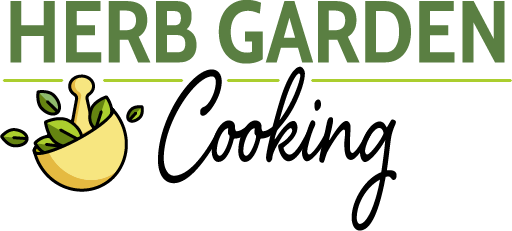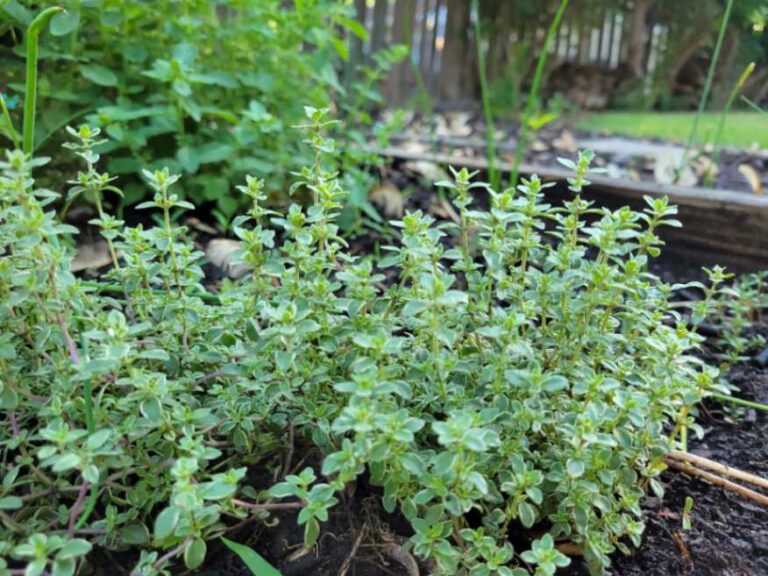This post may contain affiliate links which means I may receive a commission for purchases made through links. I only recommend products that I have personally used. As an Amazon Associate I earn from qualifying purchases. Learn more on my Private Policy page.

Thyme is a versatile herb that can add flavor to a wide variety of dishes. Thyme is a drought-tolerant herb that is relatively straightforward to grow in home gardens.
To grow thyme at home, select healthy seedlings or start seeds indoors using fresh seeds from reputable sources. After the last frost, transplant thyme in well-draining soil, and ensure your thyme plants get at least six hours of sunlight daily. Water moderately, allowing the soil to dry slightly between waterings.
Another factor to consider is companion planting with thyme. Thyme thrives when planted with other drought-tolerant herbs such as rosemary, sage, and oregano, so it’s worth researching which plants complement each other when planning your garden layout.
Table of Contents
Climate and Temperature Requirements for Thyme
Thyme is a hardy herb that prefers warm, dry climates and grows best in areas with plenty of sunlight and well-draining soil. Thyme can tolerate drought conditions quite well, making it an ideal choice for gardeners in arid regions. The sunny conditions in these climates promote optimal growth and flavor development in thyme.
Can Thyme Survive a Freeze?
Thyme is winter hardy to zones 5-9 and remains evergreen in milder regions, but it goes dormant when temperatures are regularly below freezing. Thyme can struggle in particularly chilly climates, such as where I live in Minnesota, where the weather can be harsh. Depending on the severity of the winter, thyme may not survive the freezing temperatures and heavy snowfall in northern latitudes, where it is often treated as an annual, requiring replanting each year. If you’re uncertain about your zone, consult the USDA Plant Hardiness Zone Map.
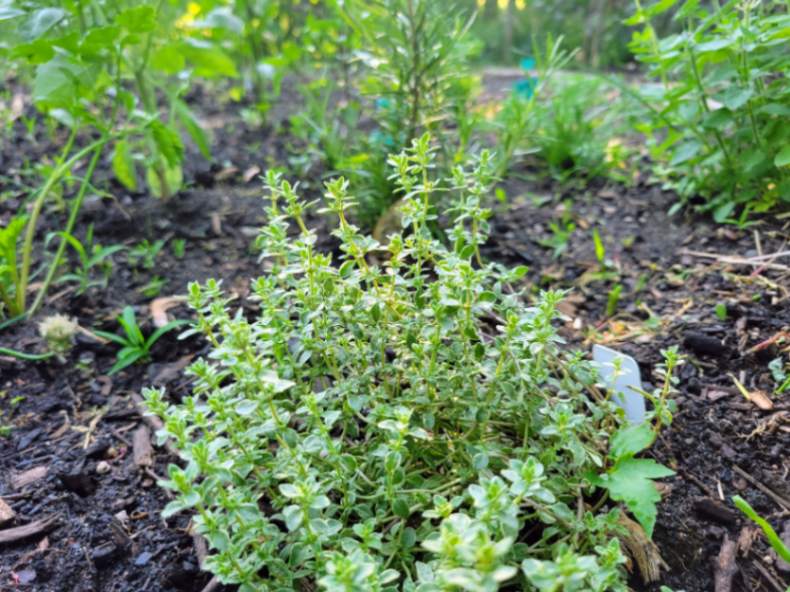
If you live in a region where temperatures regularly dip below freezing during winter, you may need to take extra precautions to protect your thyme plants. Consider covering your thyme with a frost cloth or moving them indoors during cold spells. This will help safeguard the plant from frost damage and ensure its survival for years to come.
Thyme Thrives in Areas with Low Humidity Levels
Thyme prefers drier conditions, so ensure your thyme gets good ventilation and airflow in humid areas. High humidity can create a favorable environment for pests such as aphids and spider mites, which can affect the health of your thyme plants. To combat this, you can provide proper airflow, plant thyme in raised beds or containers with well-draining soil, and employ pest control measures when necessary.
Protect Thyme from Summer Heat
While thyme loves warmth and sunshine, protecting it from extreme heat during the summer months is critical. If temperatures regularly soar above 90°F (32°C), provide some shade for your plants during the hottest part of the day. This can be achieved by strategically placing taller plants or using shade cloth. Additionally, regular watering to keep the roots cool and hydrated is crucial to prevent wilting and maintain the health of your thyme plants.
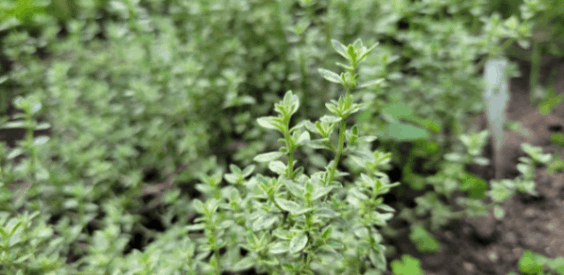
What Kind of Soil Does Thyme Like?
Thyme requires well-draining, sandy to loamy soil with a pH between 6.0 and 8.0 (slightly acidic to neutral). Thyme grows best when planted in loose, well-drained soil with low to moderate moisture.
Improving Soil Quality
To improve the quality of your soil, add compost or aged manure before planting thyme. This will help provide essential nutrients the plant needs to grow healthy and strong. Woody herbs like thyme don’t typically require fertilization, so don’t be overly concerned about amending your soil with fertilizers when growing herbs.
Avoid Heavy Clay Soils
Avoid heavy clay soils when planting thyme, as they retain too much moisture, which can lead to root rot and other diseases. If you have clay soil, you can amend it by adding sand or perlite to improve drainage.
How Big of a Pot Does Thyme Need?
When planting thyme in pots or containers, choose a container at least 6-8″ (15-20 cm) in diameter with good drainage holes at the bottom. This will allow enough room for the roots to spread and prevent waterlogging.
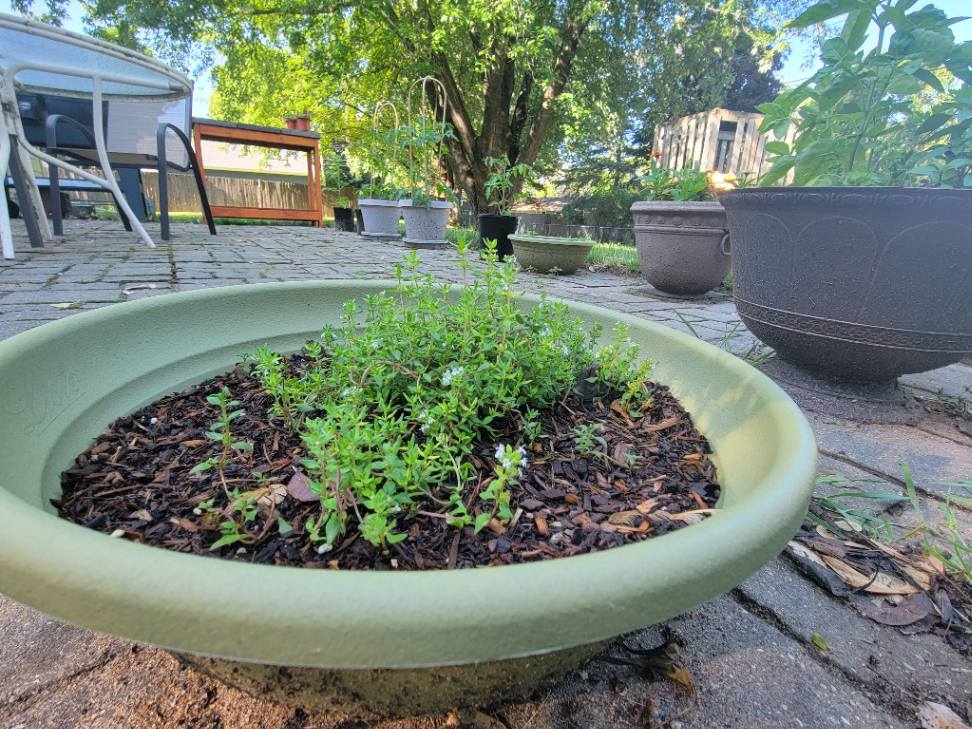
For more in-depth information on thyme’s soil preferences, check out my article on the best soil for indoor herbs or when growing herbs in containers.
The right soil conditions are crucial for successful thyme cultivation. Well-draining soil, proper pH levels, and adding organic matter will contribute to the health and productivity of thyme plants. Whether you’re planting in garden beds or pots, ensuring adequate drainage and nutrient availability will lead to robust growth, flavorful leaves, and an abundant harvest.
Sunlight and Watering Needs of Thyme
Full Sun Exposure is a Must
Thyme requires full sun exposure for at least six hours a day. This means that planting thyme where it can receive the necessary amount of sunlight is crucial for its growth and development. Whether you’re planting thyme in garden beds, pots, or as a ground cover, ensure it has access to abundant sunlight.
Regularly Water Thyme, But Avoid Overwatering
Thyme plants need regular watering to thrive, but overwatering can harm their growth. It’s important to water thyme consistently, but avoid saturating the soil. Avoiding overwatering reduces the risk of pests such as aphids and spider mites, which thrive in excessively wet conditions.
Allow Soil to Dry Out Slightly Before Watering Again
When growing thyme, it’s essential not to let the soil stay too wet for extended periods, as this can lead to root rot and other problems. After watering thyme, allow the soil around your plant to dry out slightly before watering again.
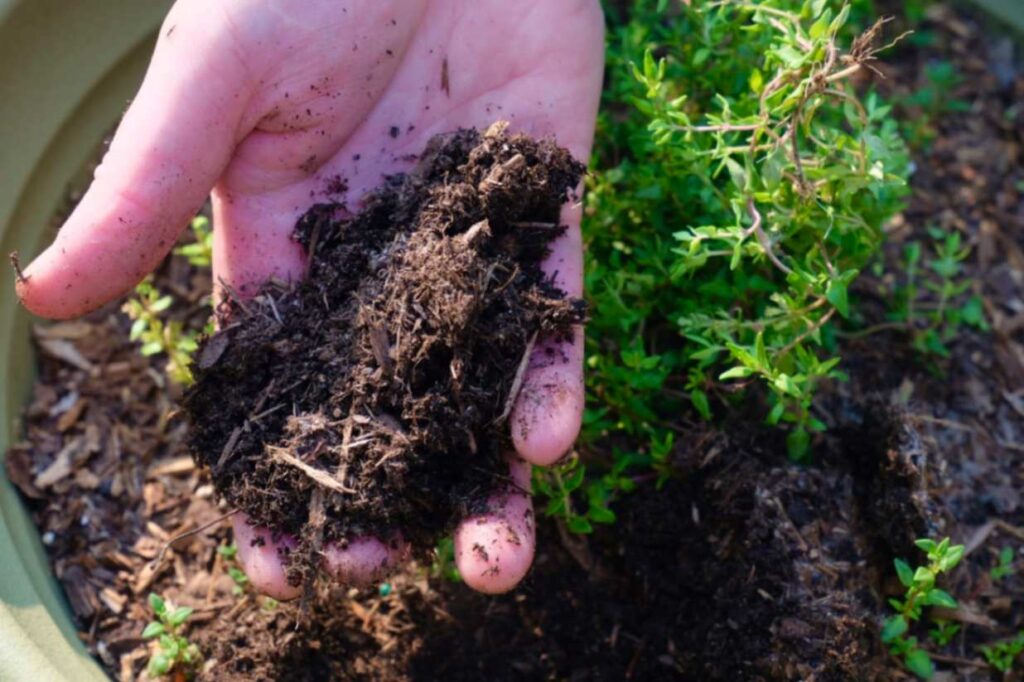
This ensures that the roots have access to oxygen and prevents overwatering. Proper watering practices contribute to the longevity of thyme plants, allowing them to flourish for many years.
Mulch Around Plants To Retain Moisture
Mulching around your thyme plants helps retain moisture in the soil while also suppressing weeds that could compete with your plant for nutrients and water. Adding a layer of organic mulch, such as straw or shredded leaves, around each plant provides insulation, conserves soil moisture, and protects the roots from temperature fluctuations.
Select Healthy Thyme Seedlings or Seeds
Look for Healthy Green Leaves on Seedlings
When selecting thyme seedlings, make sure to choose those with healthy green leaves. Avoid plants that show signs of yellowing, wilting, or discoloration, as they may not be strong enough to grow and thrive. Inspect the leaves closely for any spots, holes, or other signs of damage that could indicate pests or disease.
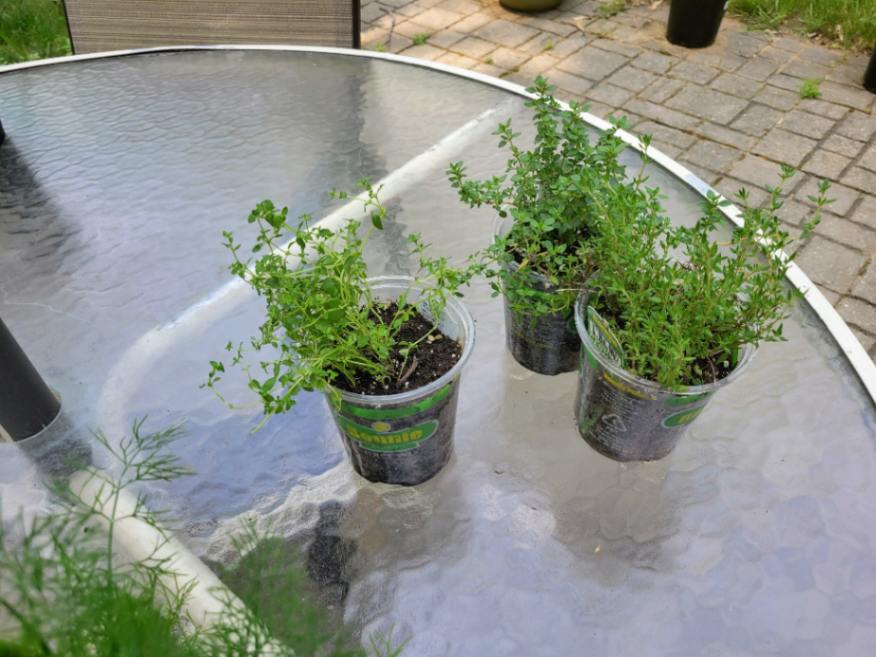
How Long Are Thyme Seeds Viable?
If you are starting your thyme garden from seeds, make sure to check their freshness and viability before planting. Old or expired seeds will have a lower germination rate and may not produce strong plants.
Generally speaking, properly stored thyme seeds will be viable for up to 4 or 5 years after the seeds have been harvested. For best germination rates, thyme seeds should be planted within the first 1-2 years.
To test the viability of your seeds, place them in a damp paper towel and keep them warm in a dark place for a few days. If most of the seeds sprout, they are still viable.
Buy from Reputable Nurseries or Suppliers
Buy from reputable nurseries or suppliers to ensure you get healthy and high-quality thyme seedlings or seeds. They will have a wider selection of varieties and can provide expert advice on growing thyme in your area. Reputable nurseries and suppliers prioritize the quality of their plants and seeds, increasing the likelihood of getting healthy and vigorous thyme for your garden.
I purchase most of my herb seeds from SeedsNow, as their seeds are 100% non-genetically modified and are open-pollinated.
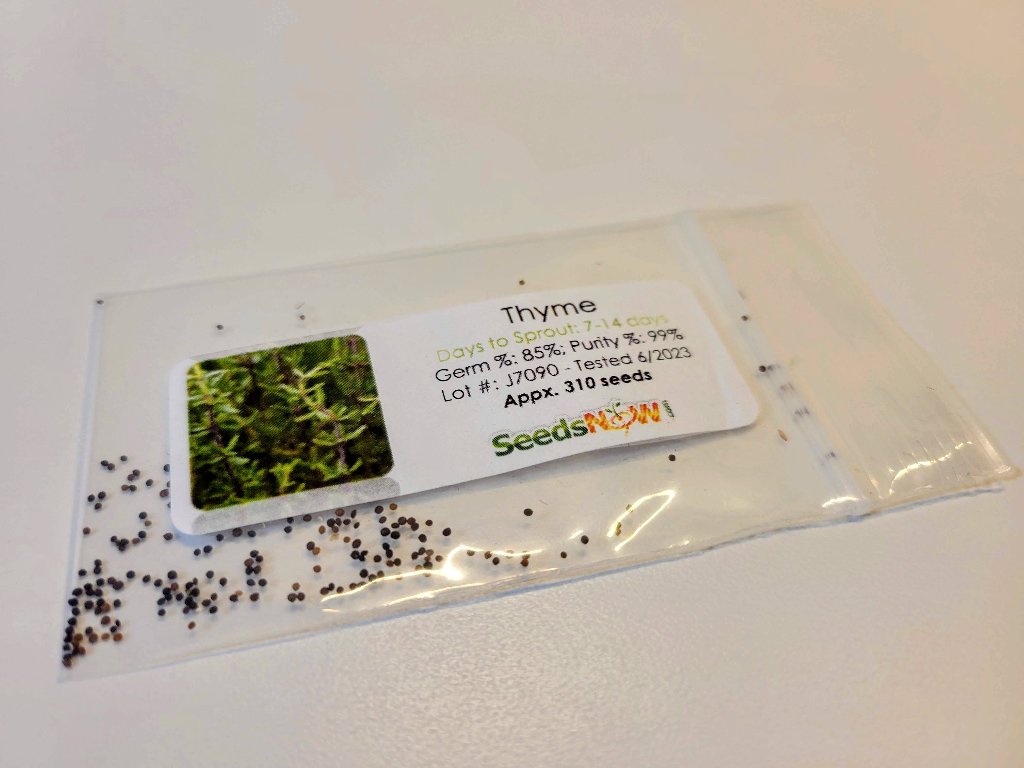
See my article on Seed Starting Supplies for Growing Herbs for more recommendations on what you’ll need to get started growing herbs from seeds.
Choose Varieties Suitable for Your Climate
Thyme comes in different varieties, such as Common Thyme, German Thyme, and Lemon Thyme. When choosing which variety to plant, consider your climate, as some types may thrive better than others in certain conditions. For instance, Mediterranean varieties like Common Thyme prefer hot and dry climates, while Lemon Thyme prefers cooler temperatures.
By selecting thyme varieties that are well-suited to your climate, you set yourself up for successful growth and bountiful harvests.

For more detailed recommendations on the best types of thyme to grow, see my article on 6 common types of culinary thyme to grow in your herb garden.
Preparing the Planting Area
It’s important to have a well-prepared garden bed before transplanting your thyme starts or sowing seeds.
- Clear Weeds, Rocks, and Debris – Before planting thyme, it is essential to clear the area of any weeds, rocks, or debris. Weeds can compete with young plants for nutrients and water. Rocks and debris can make it difficult for roots to penetrate the soil. You can remove weeds by hand or use a hoe to cut them at ground level. Remove any large rocks or debris by hand.
- Loosen Soil with a Garden Fork or Tiller – Thyme grows best in well-drained, loose, crumbly soil. Use a garden fork or a tiller to loosen compacted soil before planting. This will help improve drainage and allow roots to grow more easily. Be careful not to overwork the soil, as this can damage its structure.
- Level the Soil Surface – It’s important to level out your planting area so that your thyme plants have an even surface on which they can grow. Use a rake to smooth out any rough spots in your prepared bed.
Transplanting Thyme Seedlings
It’s best to transplant thyme seedlings in late spring or early summer, ensuring the danger of frost has passed, as thyme prefers warmer temperatures for optimal growth.
A few hours before transplanting, water your seedlings lightly. This makes it easier to remove them from their containers and reduces transplant shock.

Dig Holes Twice as Wide as the Root Ball When Transplanting Thyme
When transplanting thyme seedlings, dig the hole twice as wide as the root ball. This will allow the roots to spread and establish themselves in their new environment.
Be sure to loosen up the soil at the bottom of the hole and mix in some compost or other organic matter before planting to enhance soil fertility, provide necessary nutrients, and support healthy growth.
Thyme Plant Spacing
Thyme plants should be spaced at least 8 inches apart up to 18 inches apart. This spacing allows enough room for each plant to grow without overcrowding, which can lead to poor air circulation and increased risk of diseases. Adequate spacing facilitates access to sunlight, ensuring optimal growth.
Carefully Remove Thyme Seedlings from Containers for Planting
Gently remove the thyme seedlings from their containers, taking care to avoid damaging the delicate root system. If seedlings are in peat pots, you can plant them directly into the soil, as these pots decompose naturally.
Place your thyme seedlings in prepared holes in the ground, ensuring the top of the root ball is level with the soil surface. Backfill the holes with soil and gently firm them down to secure the plants in place. After planting, it’s crucial to water your thyme seedlings immediately. This helps settle the soil around the roots and provides essential hydration for their initial establishment.
Thyme Mulching
To help maintain proper moisture levels and suppress weed growth, consider applying a thin layer of organic mulch around the base of the plants. This mulch not only conserves moisture but also helps in weed control, which can be particularly helpful as thyme establishes itself.
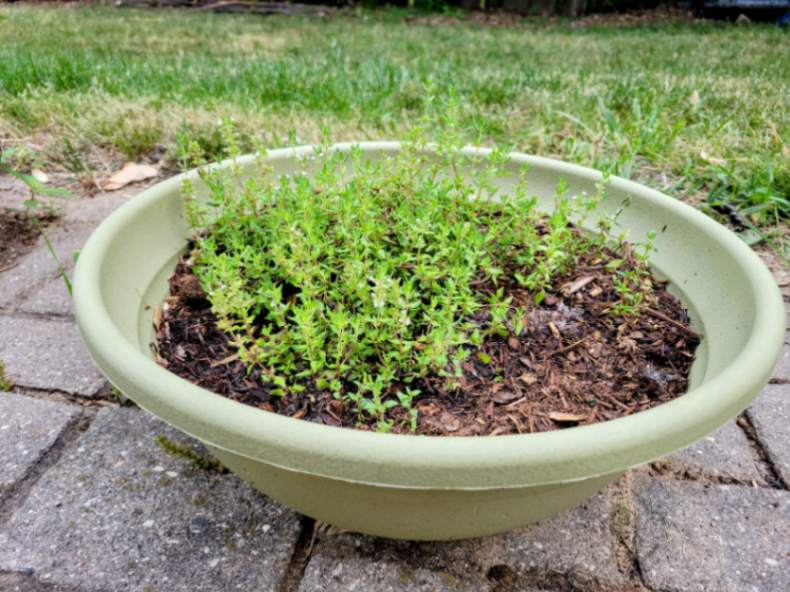
Fertilize Thyme Sparingly (if at all)
Thyme generally does not require frequent fertilization. However, if you notice signs of nutrient deficiency or slow growth, you can use a balanced, slow-release fertilizer sparingly. Be cautious not to over-fertilize, as this can lead to excessive foliage growth at the expense of the herb’s flavor and aroma.
Direct Sowing Thyme Seeds in the Garden
If you prefer to sow thyme seeds directly into your garden, be sure to space them out thinly. Thyme seeds are tiny, so it’s easy to sprinkle too many in one spot. Spacing them appropriately ensures that each seed has enough room to grow and develop into a robust plant. Cover the seeds lightly with soil, creating an optimal environment for germination.
Cover Lightly with Soil and Water Gently
Cover the thyme seeds very lightly with soil. Thyme seeds require light to germinate, so it’s critical to cover them with only enough soil so they don’t wash away.
Water your thyme seeds gently using a watering can with a fine spout or a mist setting on your hose nozzle for a gentle and even distribution of water. This promotes proper moisture penetration without overly disturbing your thyme seeds.
Keep Soil Moist Until Thyme Seeds Germinate
Thyme seeds germinate anywhere from 2 to 4 weeks, depending on conditions like temperature and moisture levels. It is important to keep the soil moist but not waterlogged during this period. Regularly check the moisture level and water as needed. Once germination occurs and the sprouts emerge from the ground, you can reduce the watering frequency as thyme is a relatively drought-tolerant herb.
While direct sowing thyme seeds outdoors is certainly viable, the tiny herb seeds and long germination time make it difficult for thyme to outcompete weed seedlings. I’ve had far better luck starting thyme seedlings indoors and transplanting them once they’re established. See my article below for more information about how to start herbs from seeds indoors…
How to Grow Herbs from Seeds Indoors
Cultivating herbs from seeds can be rewarding and provide an abundance of fresh, aromatic herbs for the home cook. Read More…
Conclusion
Planting thyme requires careful consideration of climate, soil, sunlight, and watering needs. Selecting healthy seedlings or seeds and properly preparing the planting area is crucial for successful growth.
Remember that thyme prefers well-draining soil with a pH between 6.0-8.0. It also requires full sun exposure and moderate watering. You can promote robust growth, flavorful leaves, and abundant harvests by providing your thyme with the right conditions to flourish.
Frequently Asked Questions (FAQs)
How often should I water my thyme plant?
Thyme plants prefer moderate watering, so it’s best to water them when the top inch of soil is dry to the touch. Once established, thyme is fairly drought tolerant.
Does thyme like sun or shade?
Thyme needs six hours of full sun each day to grow well. So, it’s important to plant it where it can get enough sunlight. Sunlight helps thyme grow bigger and tastier leaves.
How long does it take for a thyme plant to mature?
Thyme plants typically mature from seedlings or cuttings in about 3-4 months.
Does thyme grow back after cutting?
Thyme can grow back after you cut it. When you cut it, it makes new growth. Thyme grows compact and bushy. If you cut it back, it will branch out and make more leaves. This makes it a better plant.
Does thyme spread?
Thyme is a plant that can spread out. It depends on the type of thyme. Some thyme can spread a lot and cover more space, while others do not spread as much.
Last Updated on 11 November 2023 by Bob Lee
